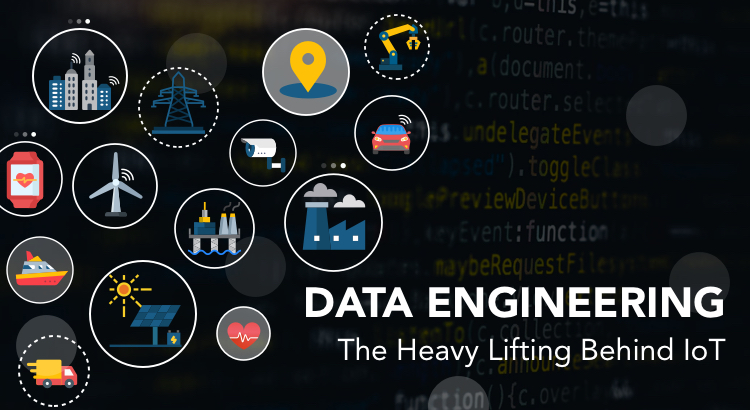Threads, a new social media platform and potential rival to Twitter is the topic of continuous updates in the tech industry. Threads, which was introduced on July 6th, 2023, and has more than 23.6 million active users, presents a new method of text-based update sharing. The discourse has again turned to big data generation, maintenance, and Internet of Things (IoT) data engineering due to the Internet accepting this new app.
In 2030, there will be over 29 billion Internet of Things devices, according to Statista. Transportation and storage, steam and air conditioning, energy, gas, government, etc., are the primary industries with over 100 million connected IoT devices. These devices generate vast amounts of data, whether employed in a household or industrial setting. This data will undergo more processing and separation in the future. And here is where data engineering comes into play!
Data engineering: What is it?

Data engineering provides data in a standardized format that guarantees no data duplication and that each piece is adequately evaluated. Data engineering makes data more dependable and delivers data with tolerable delays.
Data processing is a significant problem for large-scale businesses and medium-sized businesses. To make data accessible, configure databases, transform data, and optimize data systems, skilled and highly qualified data scientists work with software engineers and data engineers to construct solid data pipelines.
According to studies done by the Burning Glass Nova platform, there has been a significant increase in demand for data engineers in 2016. Companies are eager to invest more in data extraction and dissemination as the use of data in IoT increasingly expands.
What does IoT Data Engineering entail?

Data engineering boosts target marketing, supply chain management, customer relations, and decision-making with the growing use of Internet of Things devices. In addition, the following are some of the most prominent applications for data engineering:
- Data conversion between different formats
- Data cleaning and standardization
- Integrate and summarize data
How may IoT data insights benefit businesses?
Companies can turn IoT data into insightful business information by combining machine learning with data engineering. Data engineering transforms how businesses use data, from structuring and analyzing it at scale to building logical dashboards.
What benefits can large and medium businesses expect from IoT data engineering?
There are several organizations offering services for IoT applications. These mainly consist of engineering services, analytics services, and solutions for predictive analytics.
It is important to note that IoT services fall under four categories: analytics, consulting, implementation, and support when talking about the scope of the service.
- Analytics: By transforming complex IoT data, businesses can provide intelligent information, including in-depth data analysis. Then, enterprises utilize machine learning or artificial intelligence to provide predictive analytics while working on intricate dashboards.
- Consulting: When businesses use the Internet of Things devices, it is crucial to identify the causes of any technological failures. Expert companies offer in-depth solutions by analyzing the causes of issues and comparing various IoT frameworks and platforms.
- Implementation: Businesses that work with companies to boost their sales offer complete, individualized solutions for IoT applications. The first step in this process is comprehending the architecture design, then developing the MVP/PoC, production rollout, appropriate maintenance, and ongoing support.
- Support: After gaining knowledge from IoT data, businesses must regularly monitor their infrastructure, necessitating the assistance of reputable organizations, and this covers cloud infrastructure optimization, automation, and administration.
What difficulties does IoT Data Engineering face?

Sometimes, the data volume and velocity magnitude can be too much to handle. A robust infrastructure and reliable data processing technologies are needed to manage the constant data flow.
There are many forms of IoT data. It can be organized, partially organized, or unorganized. By creating novel strategies and procedures, data scientists can convert data sources into appropriate formats for accurate data analysis.
This commonly happens when network outages, sensor problems, etc., endanger data quality and reliability. Data cleansing and validation processes are essential in these situations to limit the breadth of inaccuracies or improperly maintained data.
Data security and privacy are significant issues in today’s society. Therefore, appropriate security precautions must be implemented to stop the leakage of sensitive data.
Final Reflections
By 2025, the market for data engineering services is expected to reach $87.37 billion, rising at a remarkable CAGR of 17.6% from $39.50 billion in 2020. Data fusion and integration aid with real-time data processing, process and system optimization, and decision-making. IoT data engineering can use AI and ML techniques to help IoT reach its full potential. To increase the potential and effect of IoT devices, organizations and brands of all sizes and from various industries should use every opportunity to apply data engineering.















